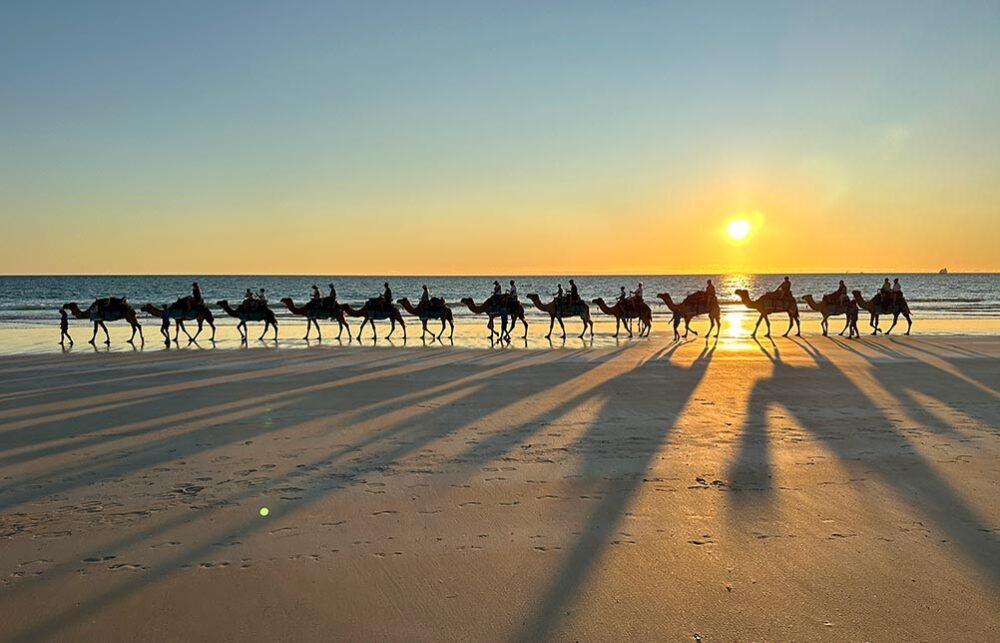On this trip to Broome in Western Australia, I spent a night in the Dampier Peninsula where I visited the Cygnet Bay Pearl Farm to learn more about pearl production but also ended up doing some other pretty interesting culture and nature tours along the way. Here’s my post about how to get to the Dampier Peninsula and things to do at Cygnet Bay Pearl Farm.
I visited Broome with Jetstar Asia on a media trip and writing assignment for the Straits Times. Read the article on ST [paywall].
Where is the Dampier Peninisula?
The Dampier Peninsula in The Kimberley region of northwest Australia manages to be even more remote than Broome as it is not located on the main highway. It’s an area 200km north of Broome that took about an hour’s flight by small plane to get there, though you could drive 2.5 hrs or even take a boat to see the region.
Flying with Air Kimberley
On this trip to Broome with Jetstar Asia, we had the chance to fly from Broome to Dampier Peninsula with Air Kimberley on a scenic flight which was a pretty cool experience as besides transferring quickly, we also got to do some sightseeing along the way.
The planes were pretty tiny with just 5 passenger seats in total, so we had to pack just an overnight backpack, and since the plane is quite small, we also had to try and balance out the weight on either side of the plane as well.
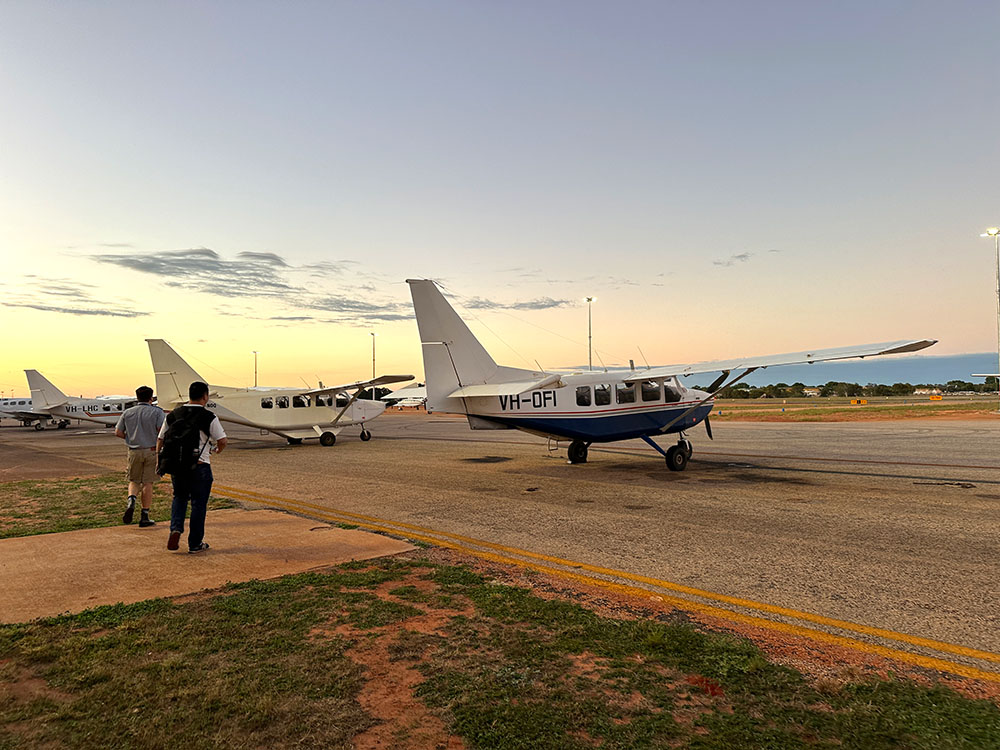
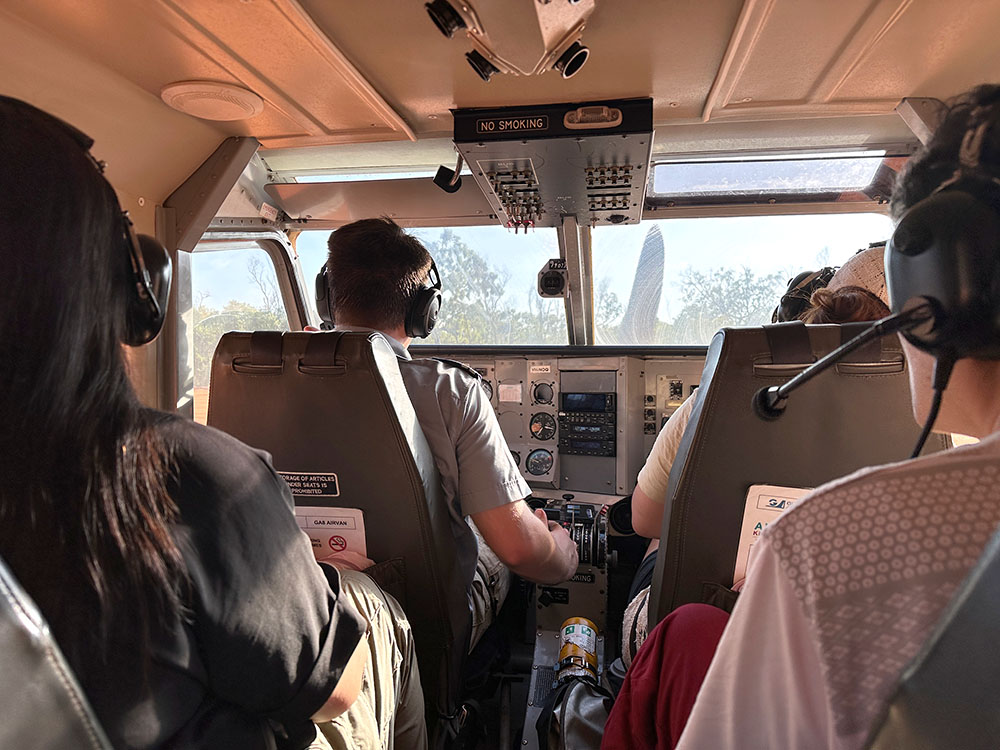
Quite honestly it’s really novel at first, but I’m not very tall and even I was feeling very folded up by the end of the flight because it was such a small plane. It can also get very hot in the plane if the sun is beating down on you, but the view from above is really quite something.
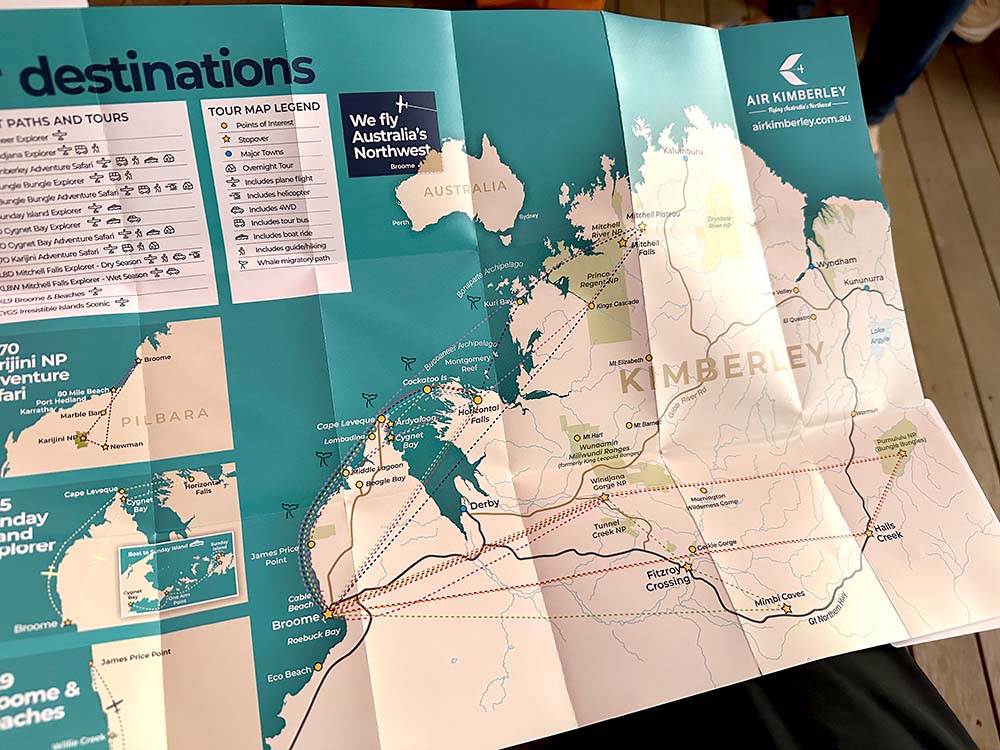
Here are some of my favourite views from above. This is the perfect chance to see Broome’s red cliffs juxtaposed against the white sand and blue waters. I didn’t quite know where we were at some points but the diverse landscapes were really something.
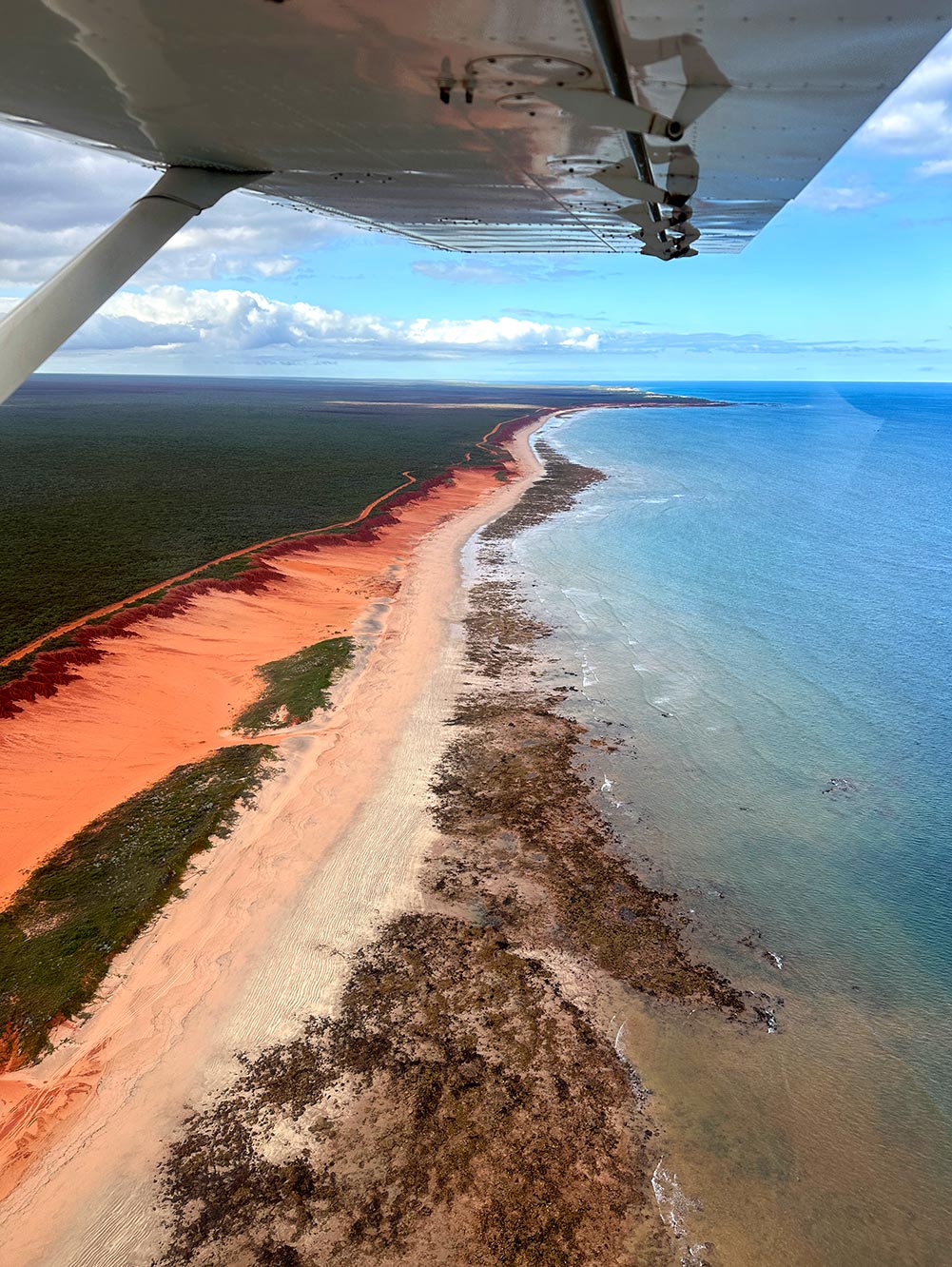
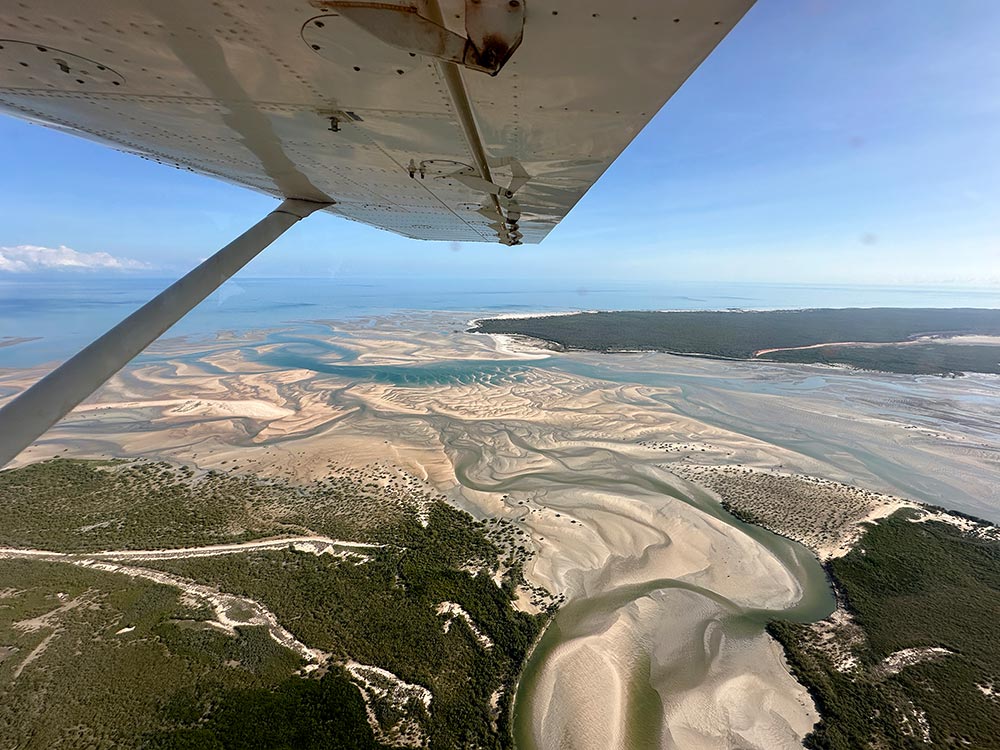
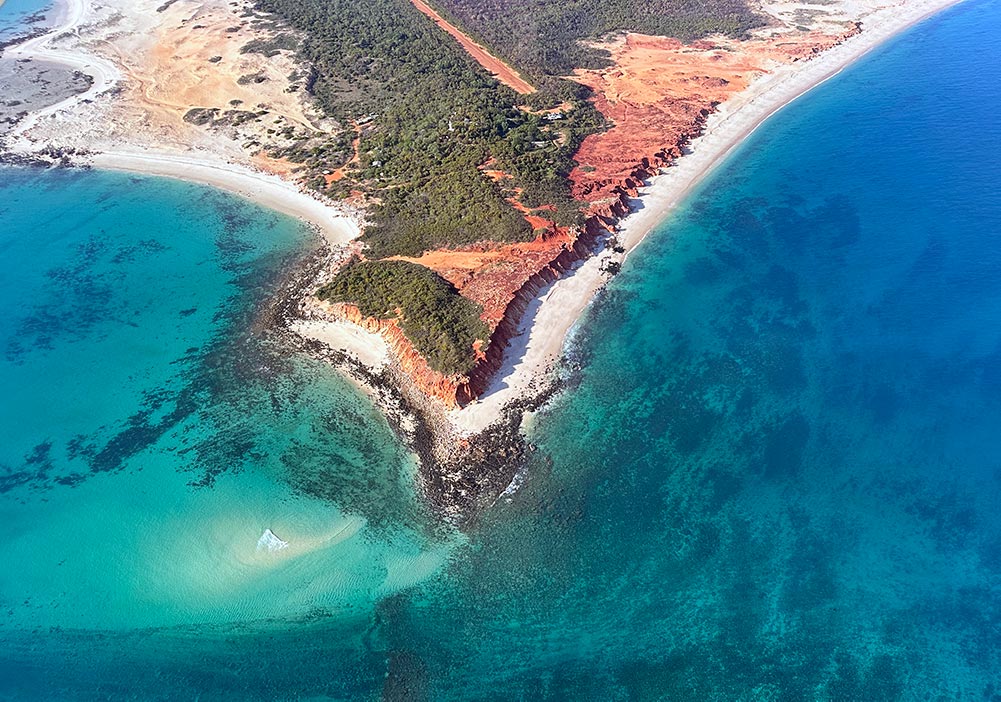
Check out the Air Kimberley website for details on its flights and routes.
Buccaneer Archipelago
The waters off the Dampier Peninisula are known as the Buccaneer Archipelago. They are home to more than 1,000 tiny little islands and have practically no inhabitants so when you fly over in the plane it’s just lots of empty land and crystal clear waters all around you. It’s pretty unthinkable for a city dweller like me.
I’d love to someday take a cruise and explore the Dampier Peninsula and Buccaneer Archipelago by sea instead.
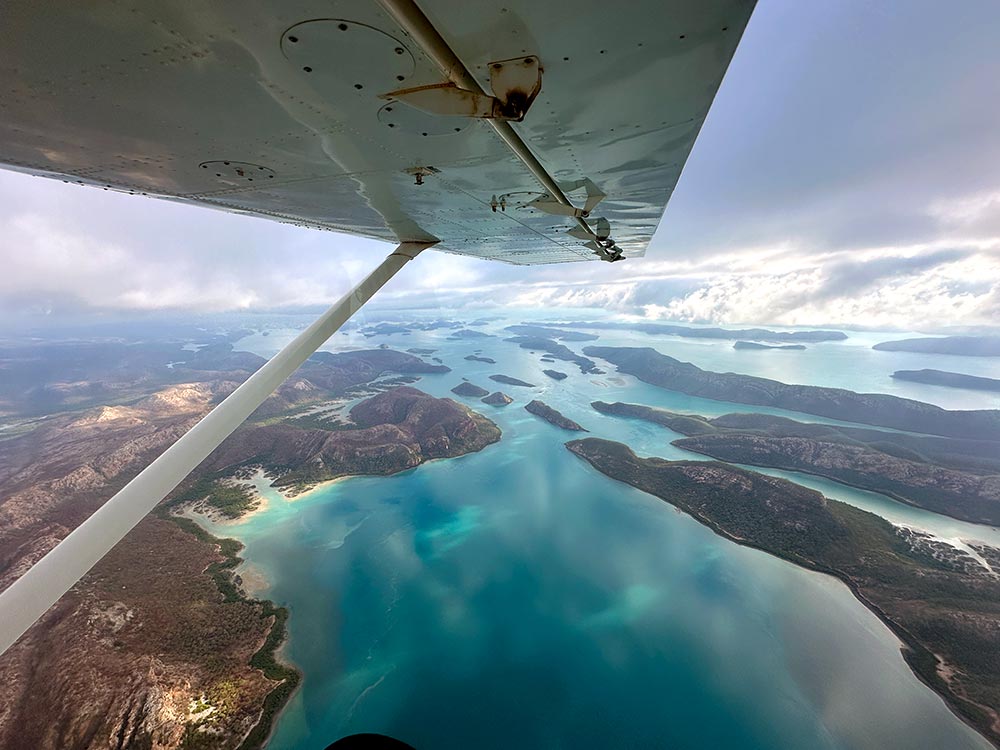
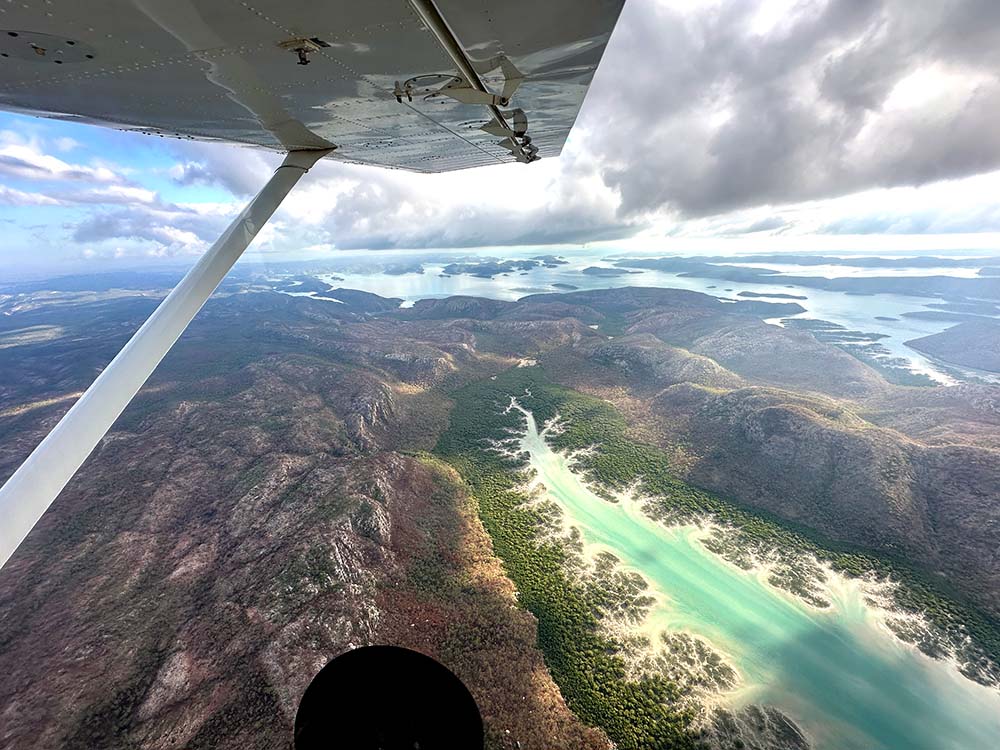
Check out this full day Dampier Peninsula and Horizontal Falls day tour on Klook [affiliate link]
Horizontal Falls from the air
One of the highlight sights to see here is something called the Horizontal Falls located in Talbot Bay. It’s not actually a waterfall on its side, but really fast moving tidal water being forced through a small inlet between two narrow gorges that creates the effect of a horizontal waterfall.
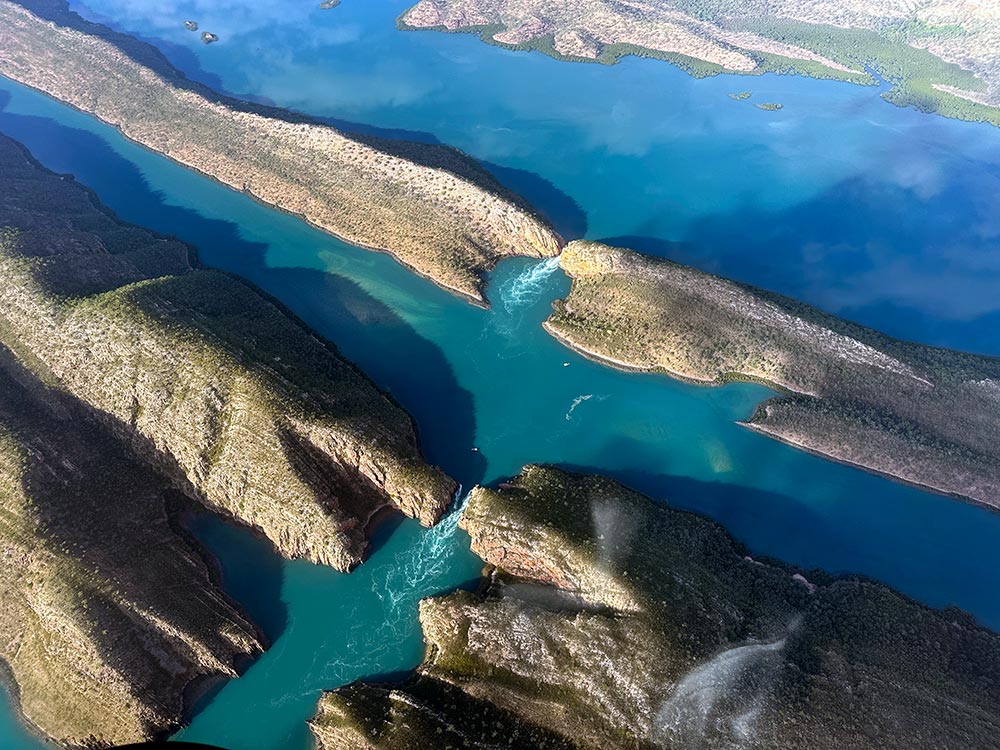
Also called the ‘Horries’, the plane flies fairly high above the falls so you don’t get a super close up view – you’ll need to either take a cruise to the area or a helicopter that takes you closer. Boats used to go through the inlets, but it’s considered a sacred aboriginal ground these days so they don’t do that anymore.
What’s fascinating is that the falls will change direction as the tide changes – it’s hard for me to imagine seeing it from so far away, so definitely if you can, consider taking a boat ride to feel the tidal movements for yourself.
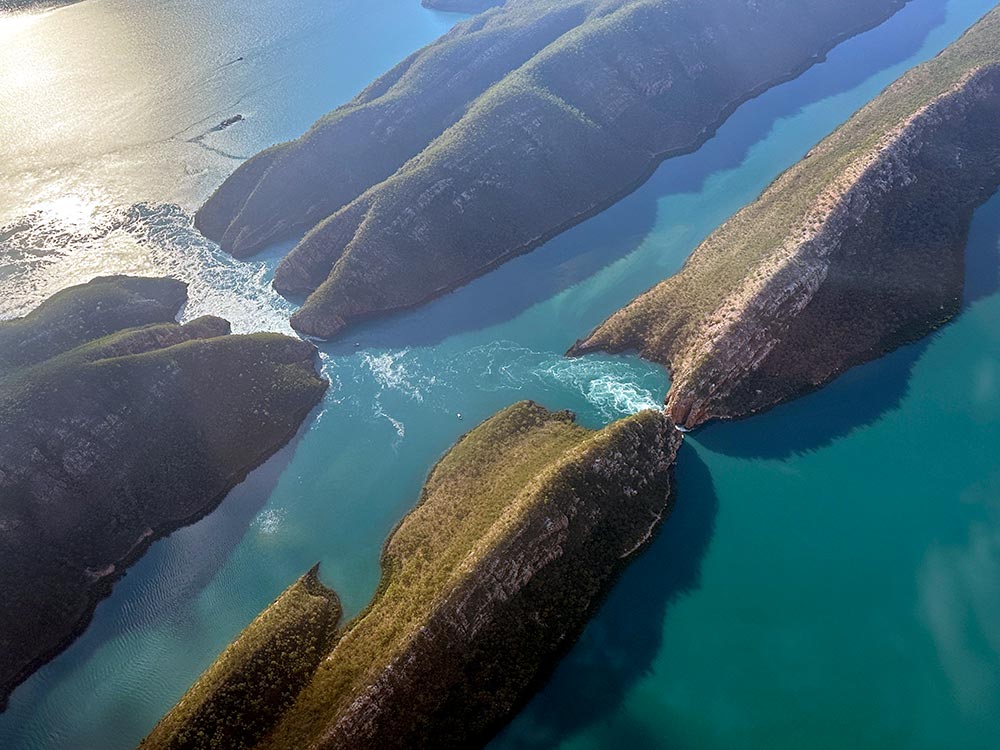
Fly over the Horizontal Falls on a sea plane with this Klook tour [affiliate link]
Cygnet Bay Pearl Farm
The Dampier Peninsula takes a bit of effort to get to, so instead of doing a day trip, we stayed overnight at the Cygnet Bay Pearl Farm here. This is a lovely little property with several types of glamping and camping spaces along the coast and we were here not to learn about pearls and pearl farming, but experience some pretty cool tours as well.
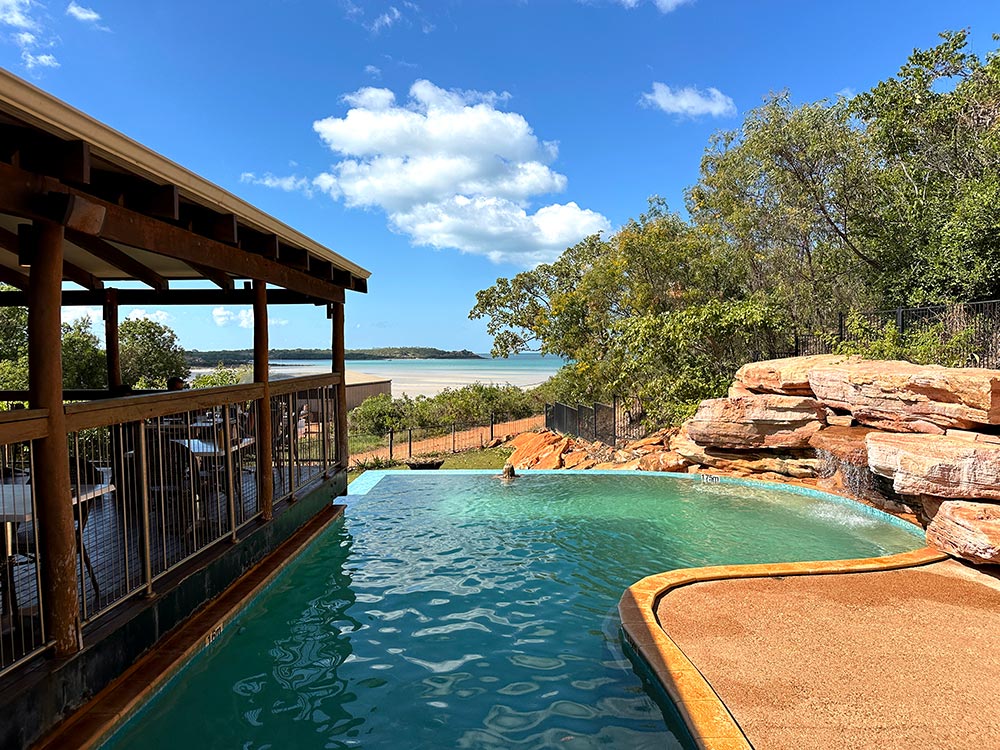
Borrgoran History and Culture Tour
The first tour we went on was with Terry Hunter, one of the aboriginal Bardi Jawi tribesmen whose family have lived in these parts for generation. He’s such an interesting fellow, showing us how his people lived and telling us about the indigenous tribes around the Dampier region and across greater Australia – there are over 250 of them!
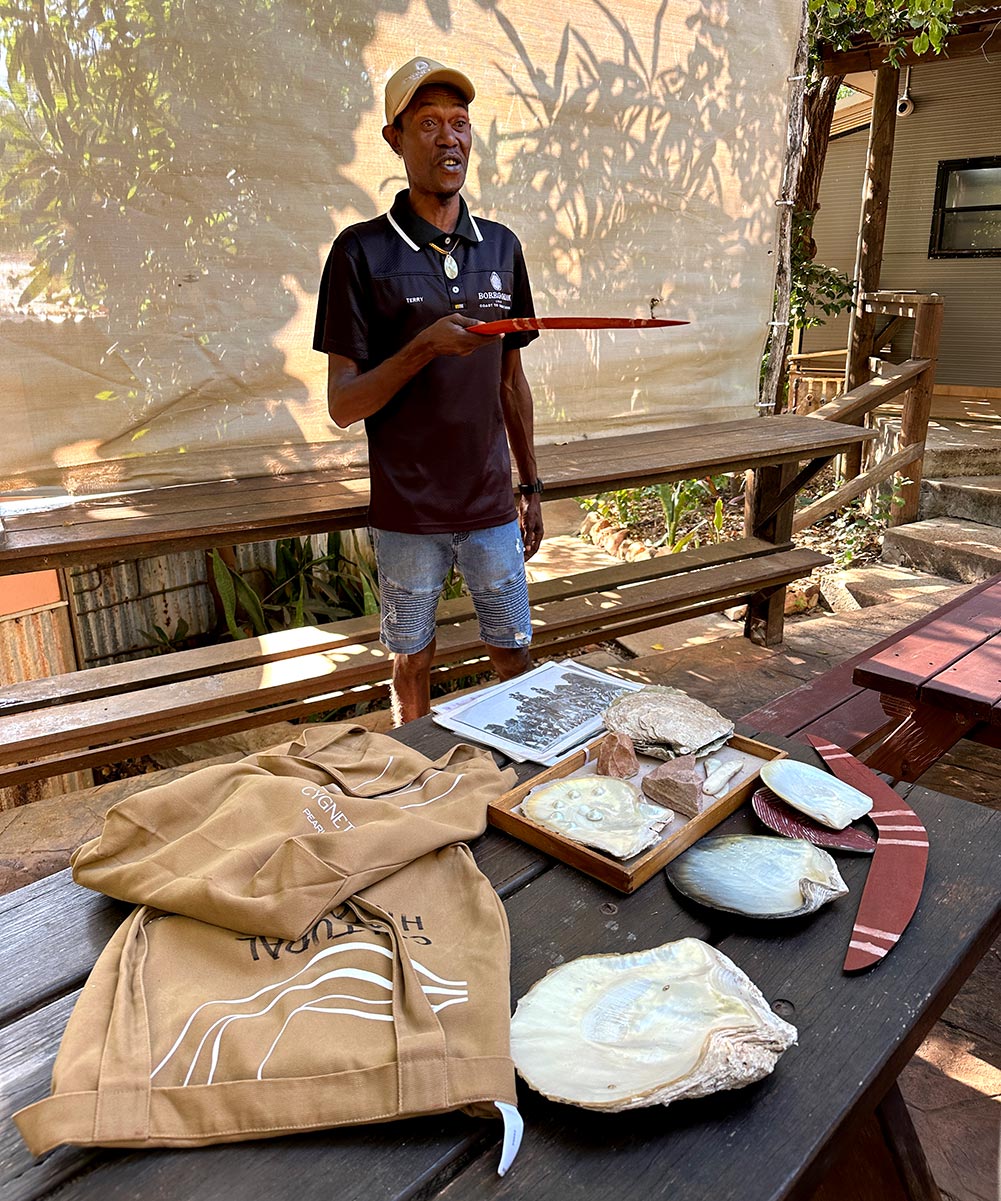
For example, one of his stories was about proper boomerangs are not actually meant to return after you throw them. Most boomerangs including the Bardi ones are long pointy things used for hunting, thrown from a distance and meant to stick in their target.
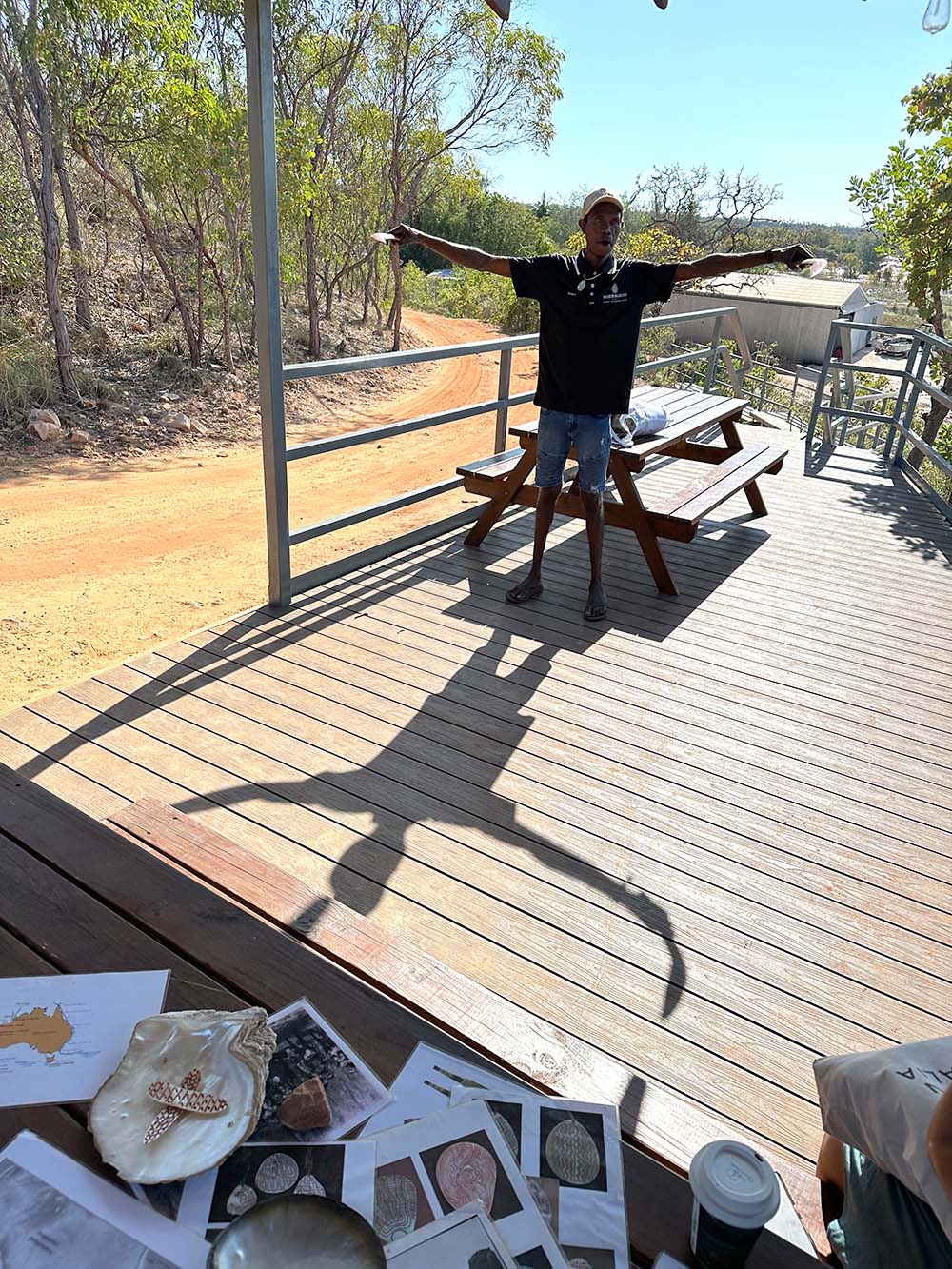
He also showed us how the Bardi Jawi people made rafts and navigated the waters around this part. Terry was a really interesting fellow so I definitely enjoyed hearing his stories and speaking with him.
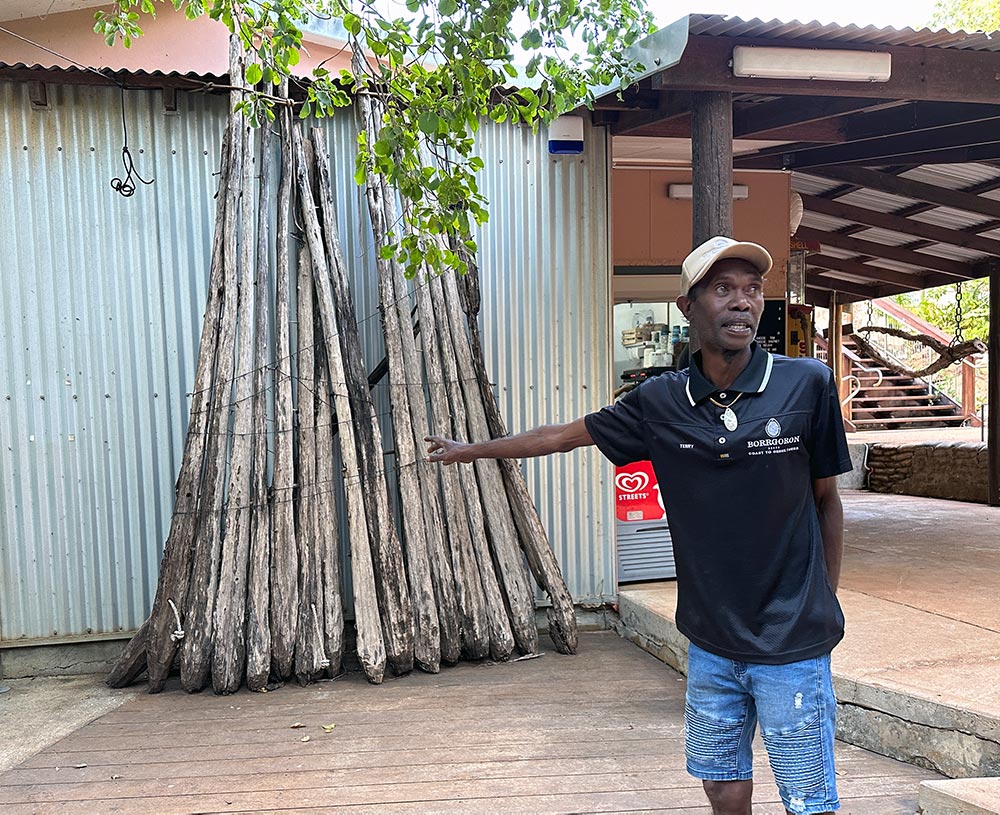
Book the Borrgoran Coast to Creek tours online
Giant Tides Tour
Broome has some pretty interesting tidal action that you can experience from the shore, but being out on the water is quite an unusual way to see these tides in motion. We took the Giant Tides tour in a dinghy boat that can go on both land and water.
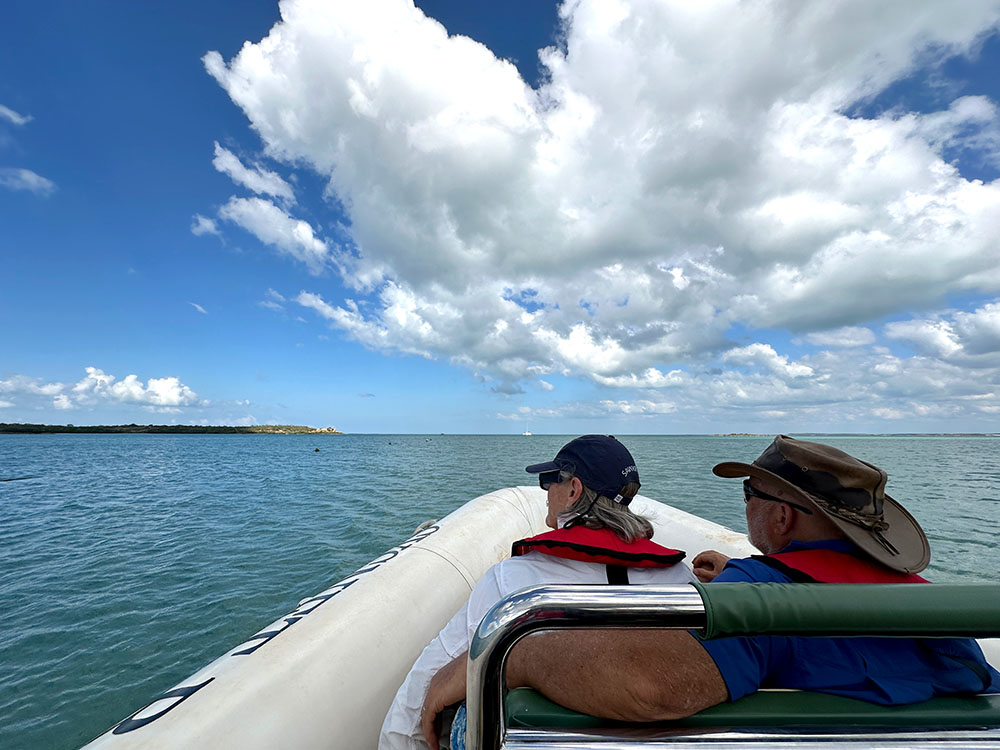
The tide movement on the water is quite unusual! We saw pancakes – glassy, flat bits of water that are like the eye of the storm – as well as strong eddies and whirlpools showing just how strong the tides are.
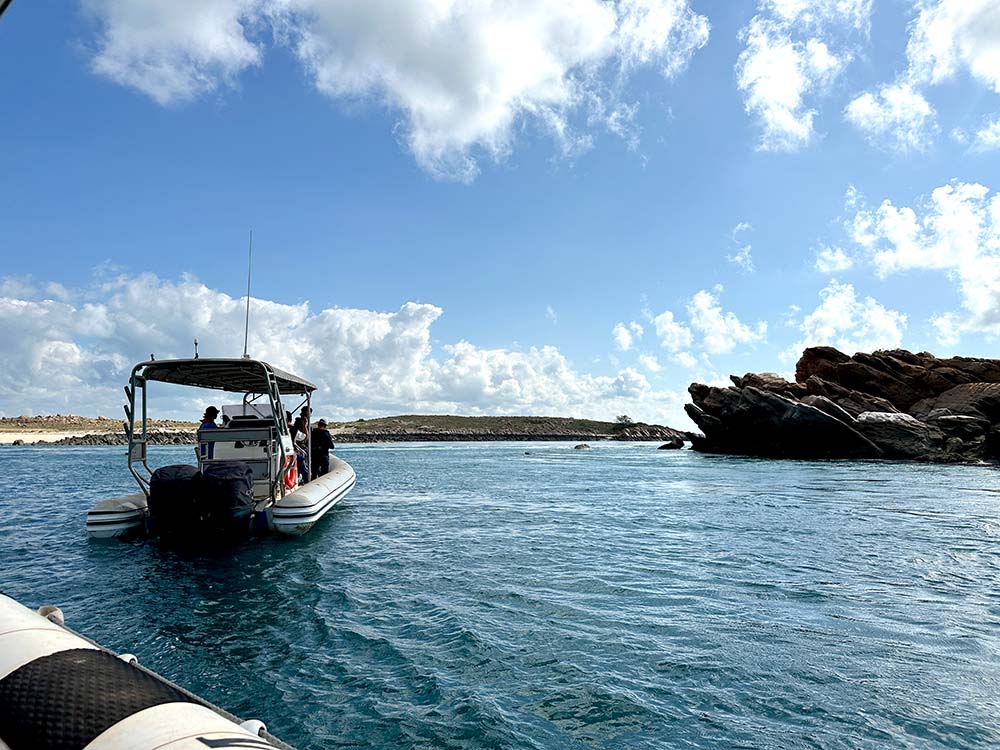
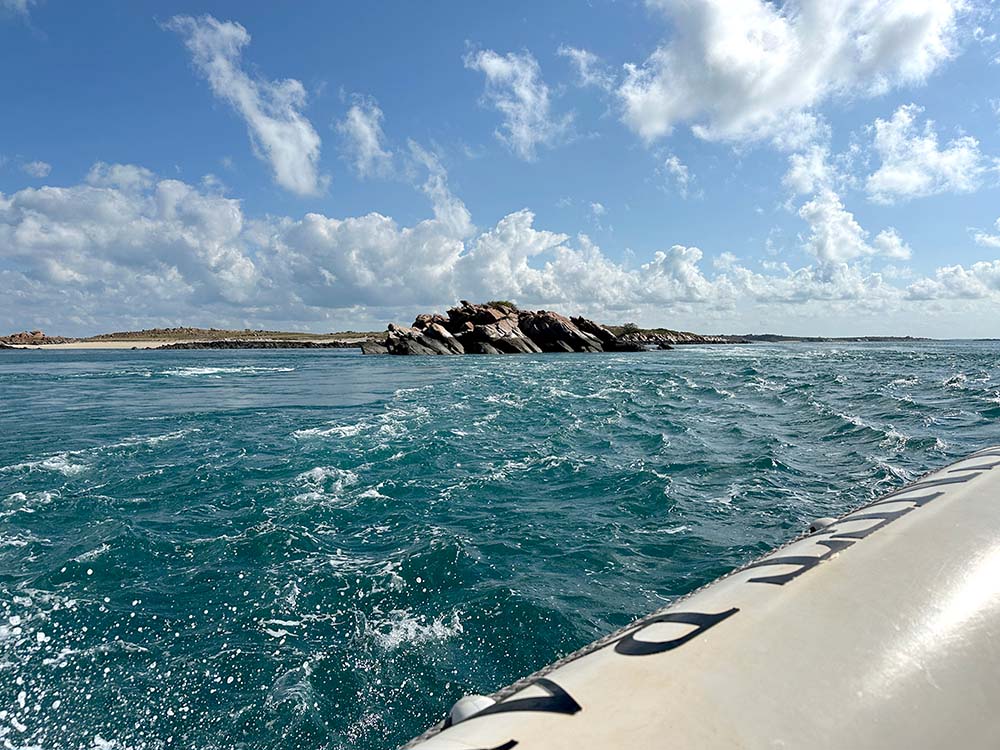
This is one of those phenomena that you have to see and experience for yourself in person as photos don’t do it justice. Definitely not for those who get seasick easily because of all the choppy waves, but very intriguing for those who love nature as the boatman does a very good job of explaining the phenomenon and how the tides work along the way.
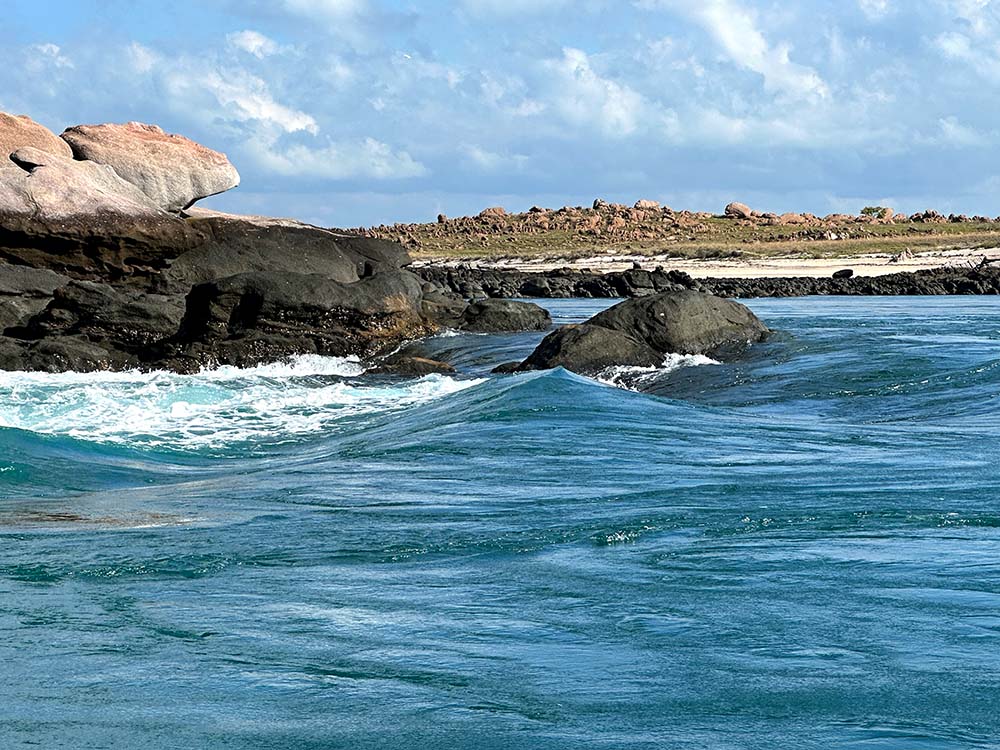
Check out the Giant Tides tour online or book the Giant Tides Tour on Klook [affiliate link]
Pearl Farm Tour
The main business of Cygnet Bay Pearl Farm is harvesting Australian South Sea Pearls, and we got to take a closer look at how they do it on this tour. Our guide brought us around the farm, starting with the shells. Like we learned in the Broome Pearl-Lugger tour, it wasn’t originally the pearl that had value, but the pearl shell or nacre.
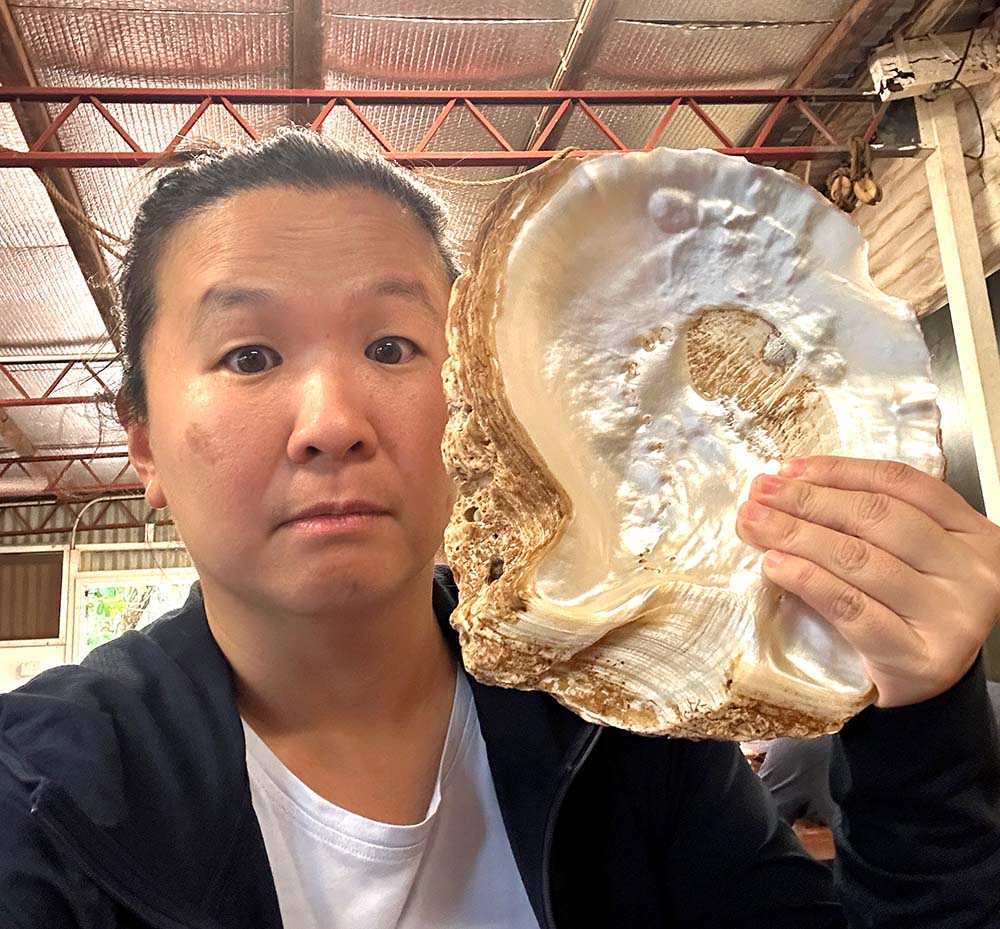
Terry earlier also told us stories about the pearl shell and how the Bardi Jawi people use nacre to document their history through carvings and art known as ‘riji’ – they used to casually toss away the pearls after opening the shells!
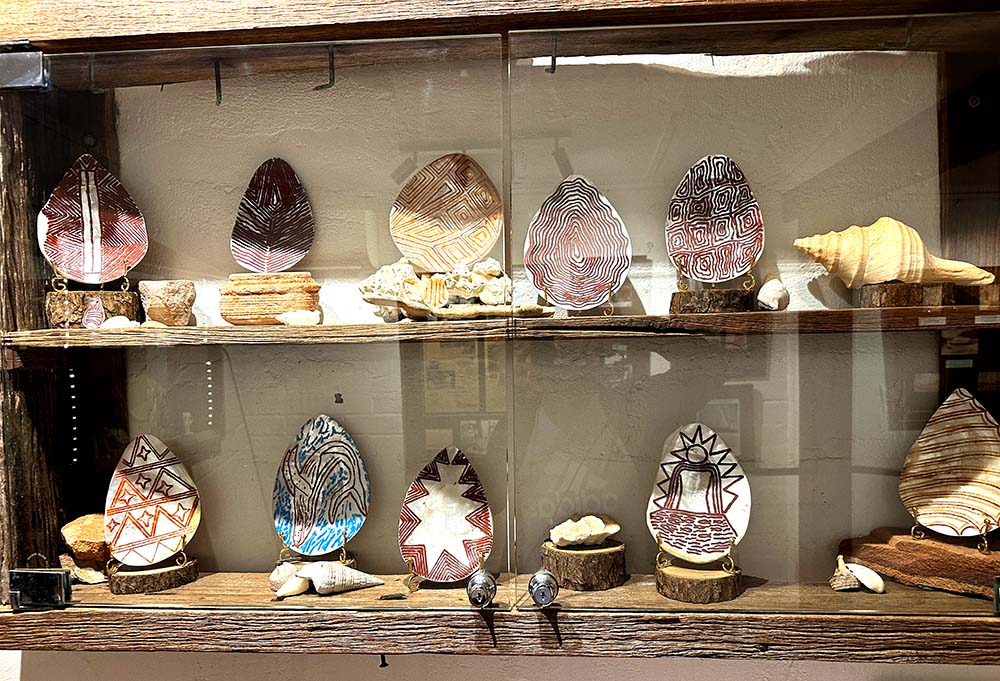
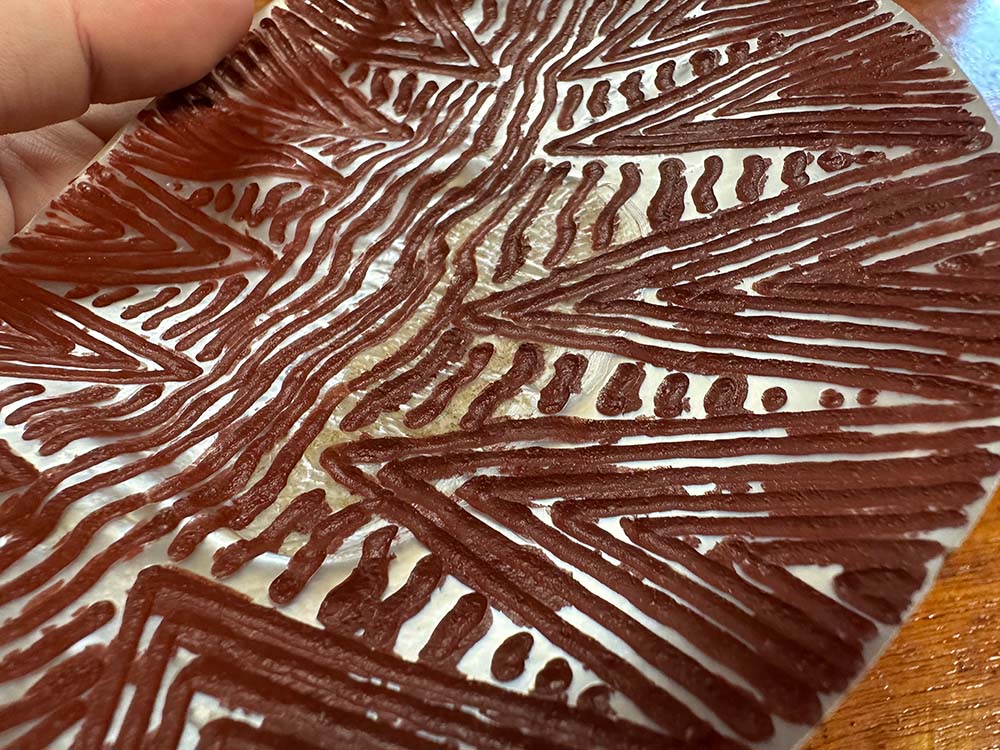
We also got a closer look at how they harvest pearls today. Each oyster shell is housed in a netted cage and suspended in the sea water and left for the pearl to grow, which can take a few years, and you won’t find out whether the oyster’s pearl has successfully grown until you pry it open at the end.
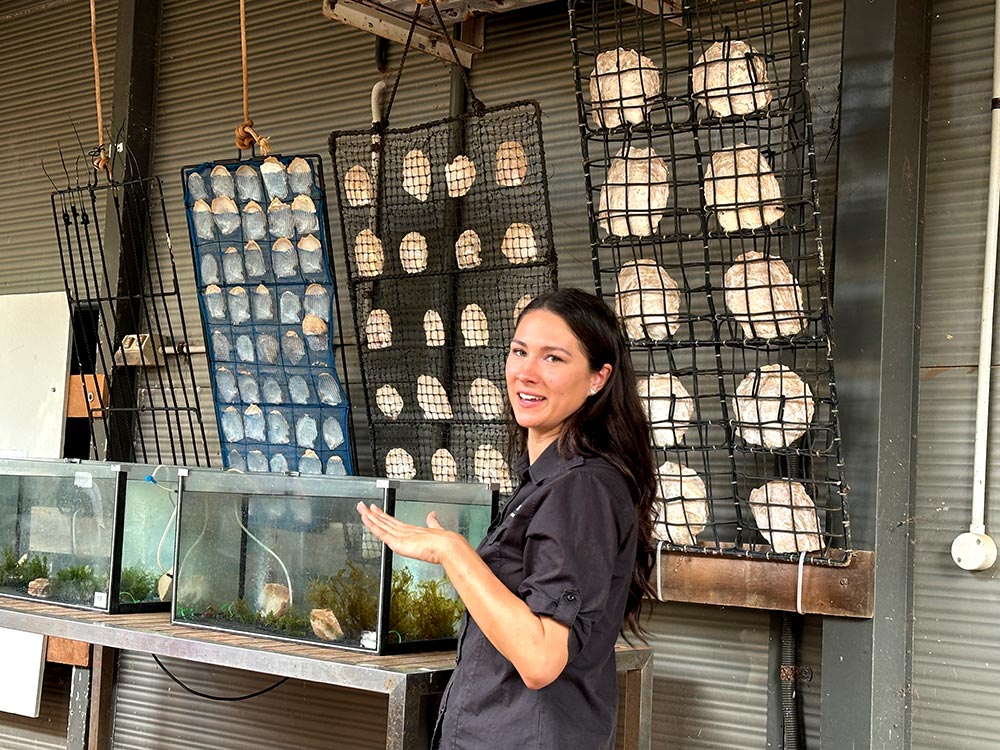
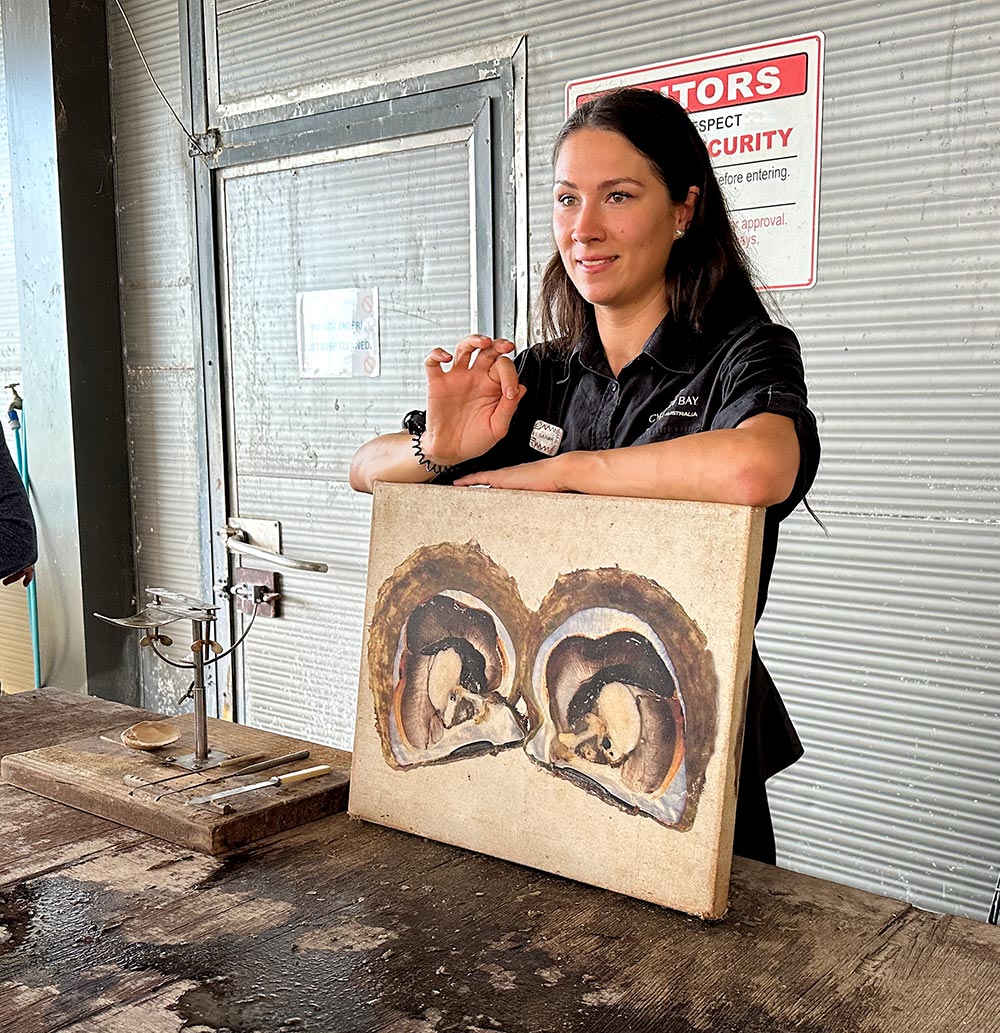
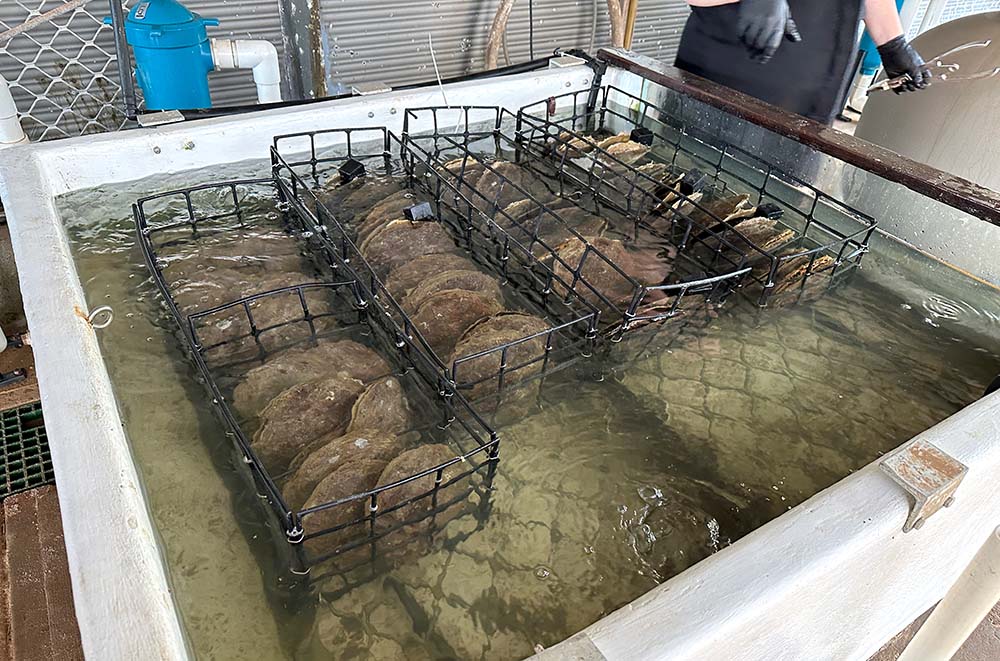
After the pearl harvesting, we learned more about pearls and how they are valued based on factors like lustre, surface, shape and size. That night during dinner, we did a live pearl harvesting where each table had 2 oysters that were pried open in front of us and the pearl extracted and graded – our extracted pearls did quite well, with one of them costing about A$100! You can even purchase them after the extraction which makes for quite a fun souvenir. The super fresh pearl meat is also quite tasty.
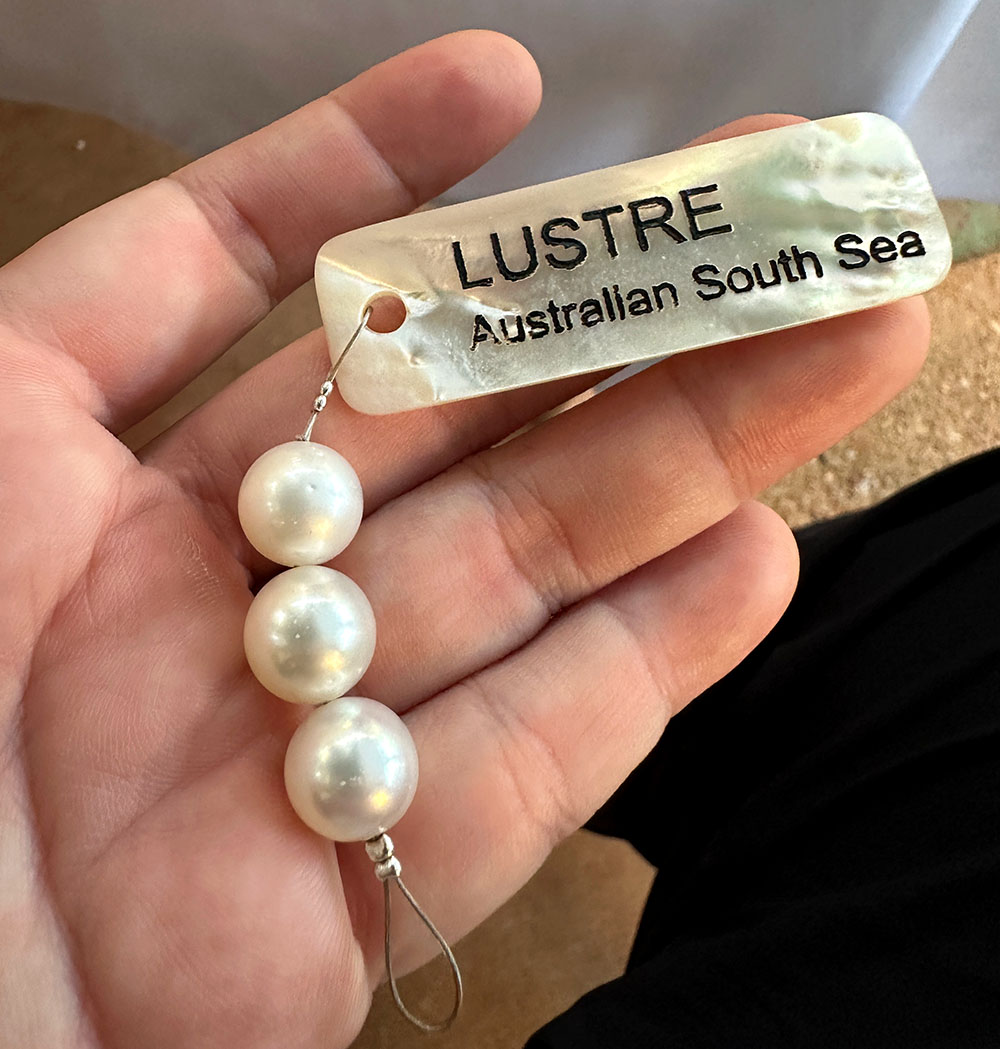
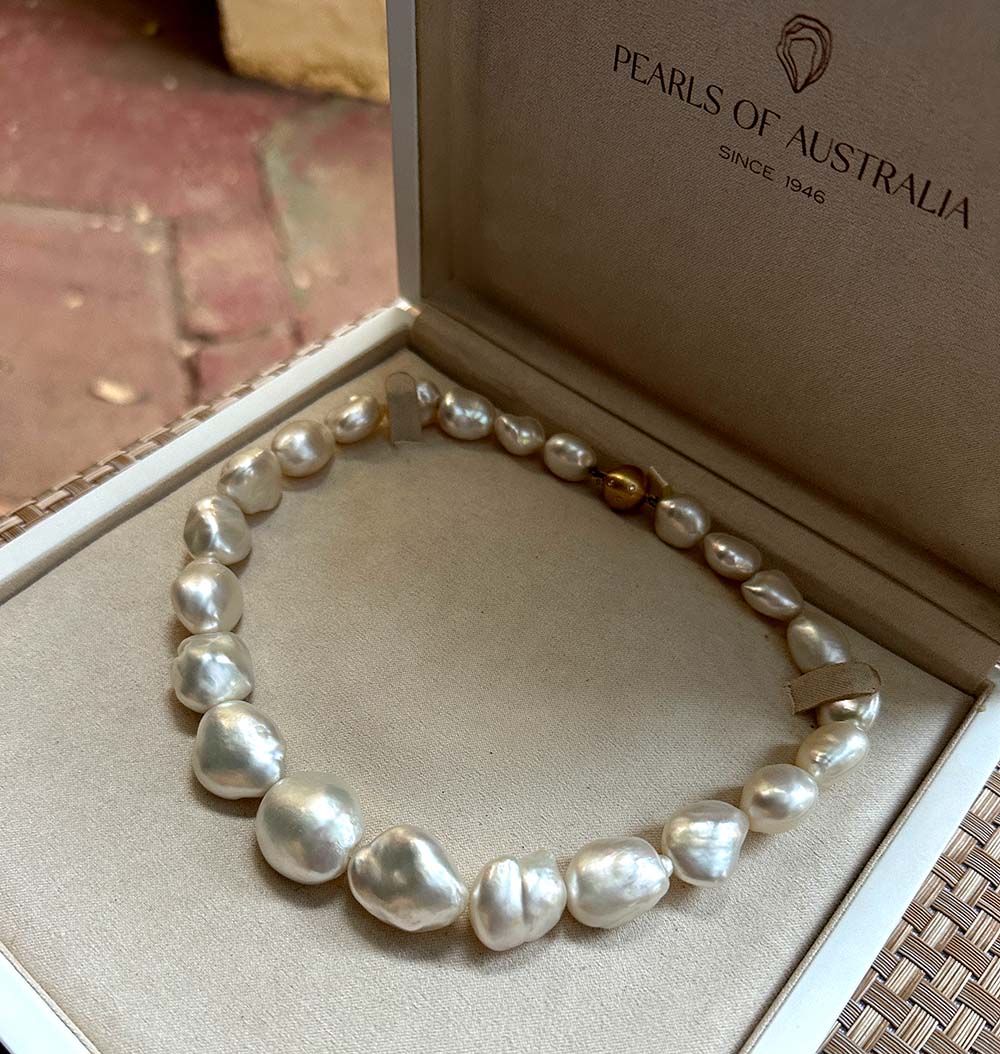
Check out Cygnet Bay Pearl Farm or book Cygnet Bay Pearl Farm Tour via Klook or a live pearl harvest tour via klook [affiliate links]
Accommodation – Village Eco Tent
Cygnet Bay Pearl Farm has several types of accommodation – we stayed in the Pearler’s Village where there were a cluster of Village Eco Tents about 5-10 mins walk away from the main restaurant area.
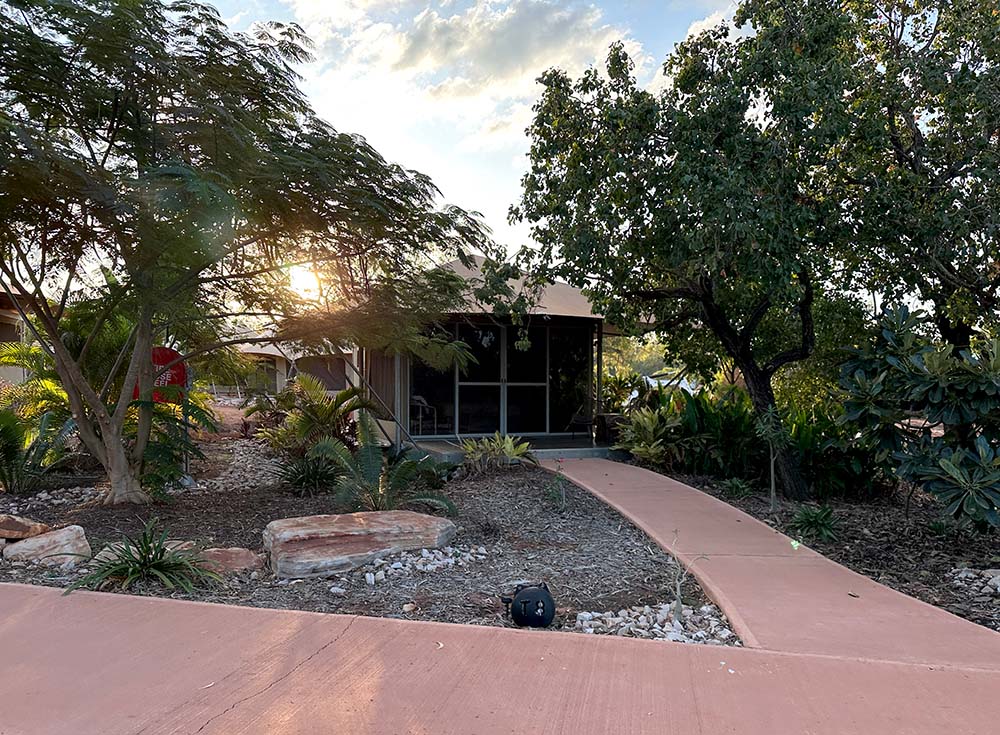
This is my sort of glamping, in a spacious ‘tent’ with its own attached bathroom and toilet and a proper bed. The walls are a thick canvas material and you can zip and unzip the windows to let in light. I like that they have netted screen doors so you can let the fresh air in but keep the bugs out. There’s a nice patio as well to chill out on if that’s your thing.
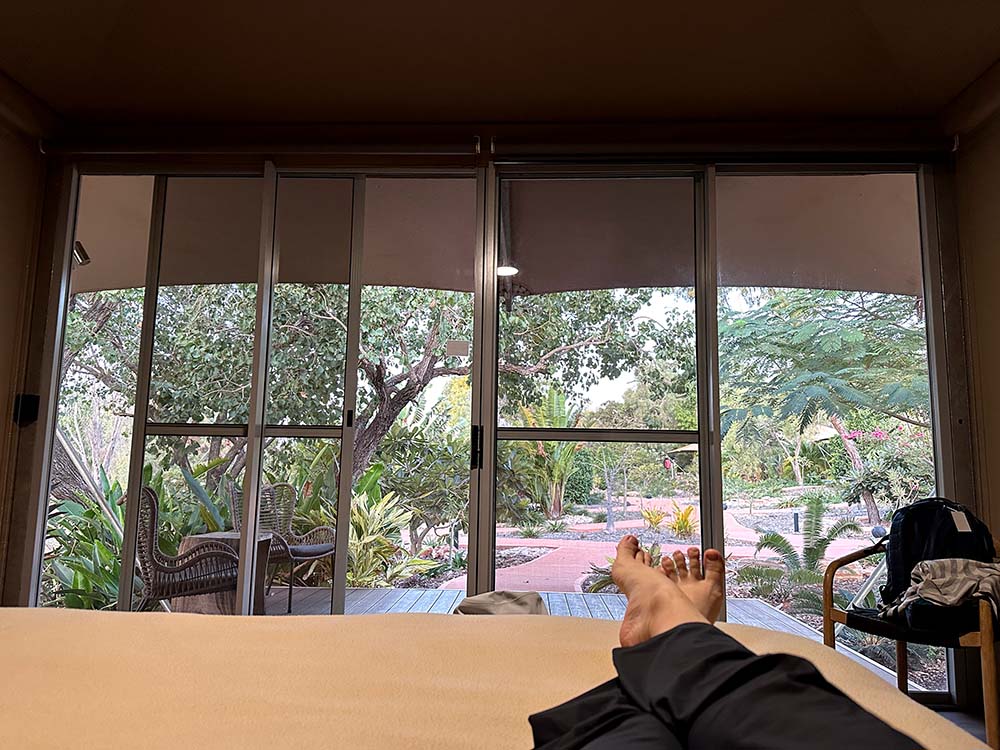
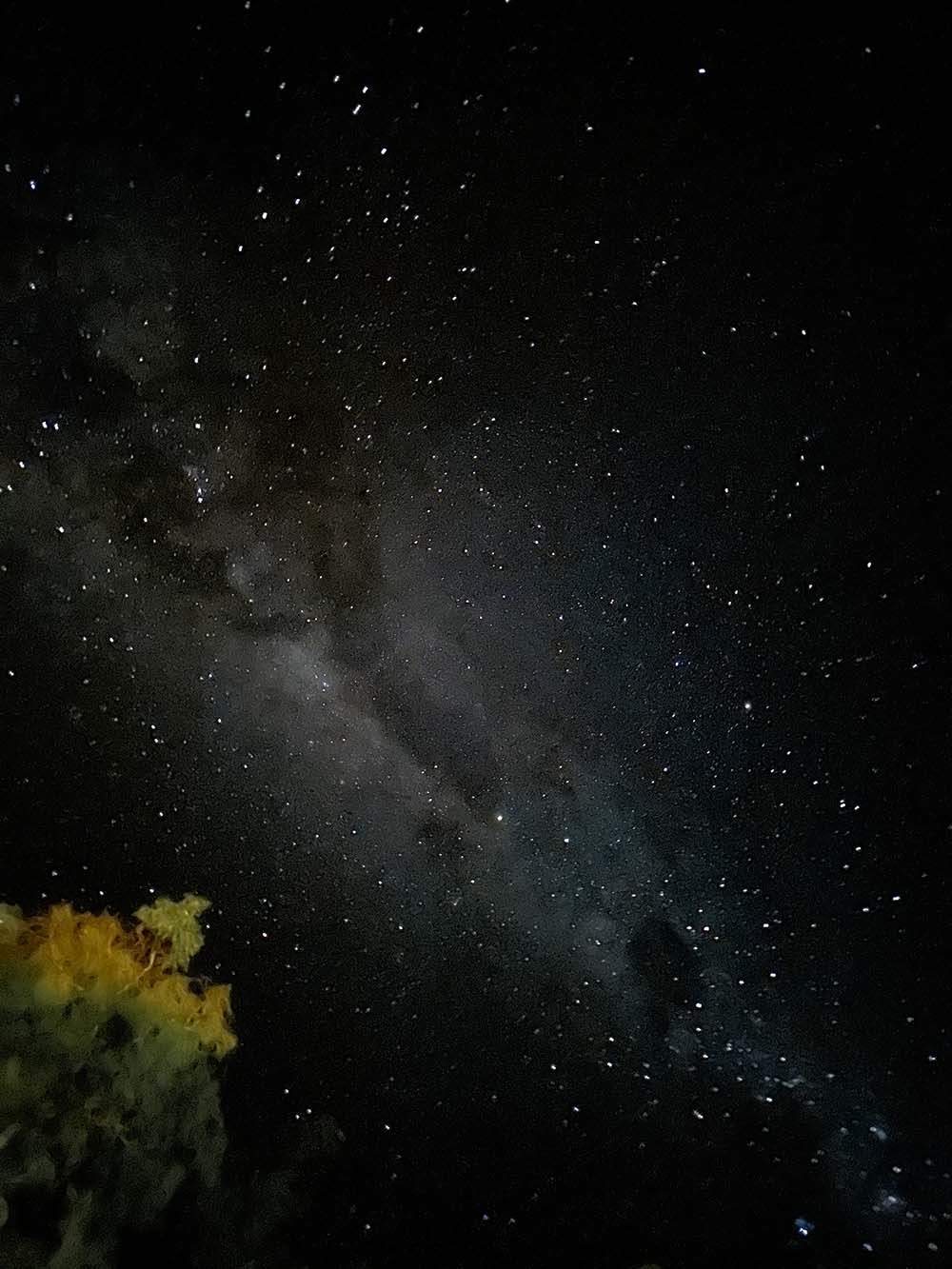
More info about Pearler’s Village stays on the website – the mininum booking is 2 nights, though we only stayed 1 night as part of the FAM trip.

